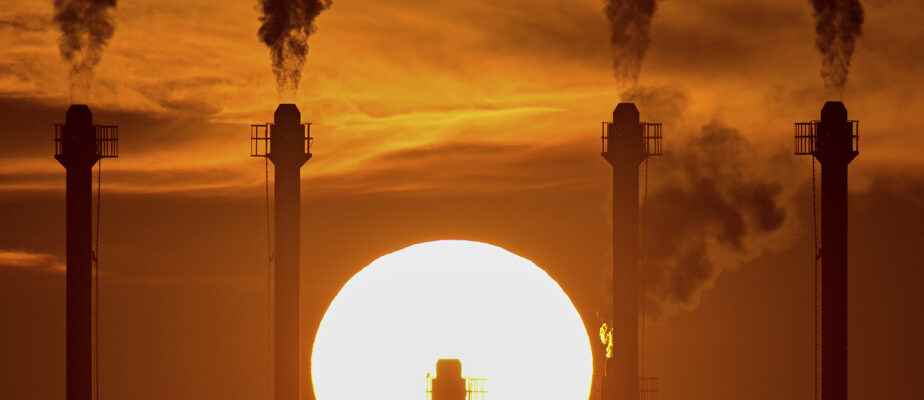(Paris) Global greenhouse gas emissions from fossil fuels are “on track” to reach a global “peak” around 2025, due to investments made by the industrial sector to reduce its carbon footprint, says the Norwegian analysis firm Rystad Energy.
Within two years, emissions related to fossil fuels should reach 39 billion tonnes, before beginning a slow decline, according to this study published Thursday.
After falling to 36 billion tonnes during the pandemic in 2020, they increased in 2021 and 2022, reaching 38.3 billion tonnes last year, calculates RystadEnergy.
Because many countries, especially in Europe, have sought to secure reliable and accessible energy linked to coal or gas rather than renewable energies, in order to compensate for the loss of Russian gas after the invasion of Ukraine in February, notes the study.
As a result, direct fossil fuel emissions in the power and heat sector reached a record high last year, at 14.4 billion tonnes.
But, as a harbinger of a possible change underway, by isolating the industrial sector alone – for both electricity and heat – the study estimates that its CO emissions2 are expected to peak as early as “this year”.
“The decline thereafter should be minimal, but gain in intensity in the years that follow,” said Rystad.
The major steelmakers, cement manufacturers and chemicals producers, which are major emitters of greenhouse gases, have all announced investment plans for their decarbonization. “If the industry can keep up the pace, global warming below two degrees Celsius is achievable,” said Artem Abramov, head of decarbonization technology research at Rystad Energy, quoted in a statement.
Last year, CO emissions2 linked to fossil fuels in factories remained stable at 9.95 billion tonnes worldwide. Because those that were linked to the economic recovery in China were “compensated” by a decline in China’s overall industrial carbon intensity, says Rystad, but without giving a precise figure on the subject.
On the globe, Rystad sees Europe, the United States and China making progress in reducing their emissions by 2030, while India is expected to continue to increase them (by 36% between 2022 and 2030) as well as other Asian countries.
